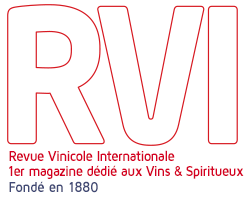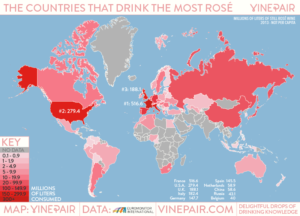THE INCREDIBLE RISE OF ROSÉ IN AMERICA
This spring the phrase “Yes Way Rosé” (#yeswayrosé) seemingly exploded out of nowhere. By the end of last summer, the New York Post’s Page Six was hyperventilating over an imminent shortage of rosé in the Hamptons. Had an insatiable demand for rosé suddenly exploded out of nowhere, leading to a run on the pink booze bank? Yes and no. What has actually happened over the last decade has been a rapid, still-accelerating and somewhat contradictory shift in American wine preferences.
As recently as the 1990s, for most Americans, “blush wine” aka rosé aka “White Zin”was something your grandmother drank, possibly from a large jug. About a decade ago, tastes began to change, leading to falling sales of cheap sweet pink wines and rising sales of premium ($12+) dry rosé wines. Had American palates suddenly shifted away from sickly sweet concoctions, at least when it came to wine? For rosé, the answer would appear to be yes. Yet at the same time red blends packing large doses of residual sugar — think of California wines named after desserts — have also seen soaring demand, with many citing The Prisoner as the spark of this craze (how sweet that wine was back in 2001 versus today is a touchy issue). This period also saw the relentless rise of Moscato, another wine that packs in the sugar. Recent data out of California suggests that the only segment of the American wine market that might be growing faster than ‘premium dry rosé’ is the vague ‘(sweet) red blend.’
Thanks to Vinpair.com for this article, read it all here !




